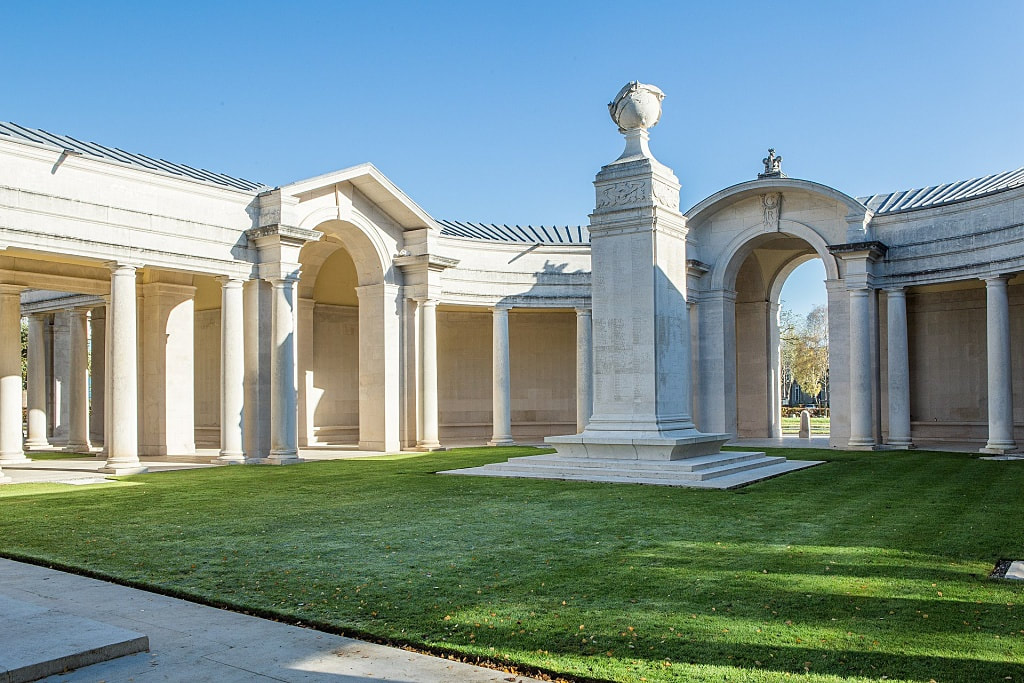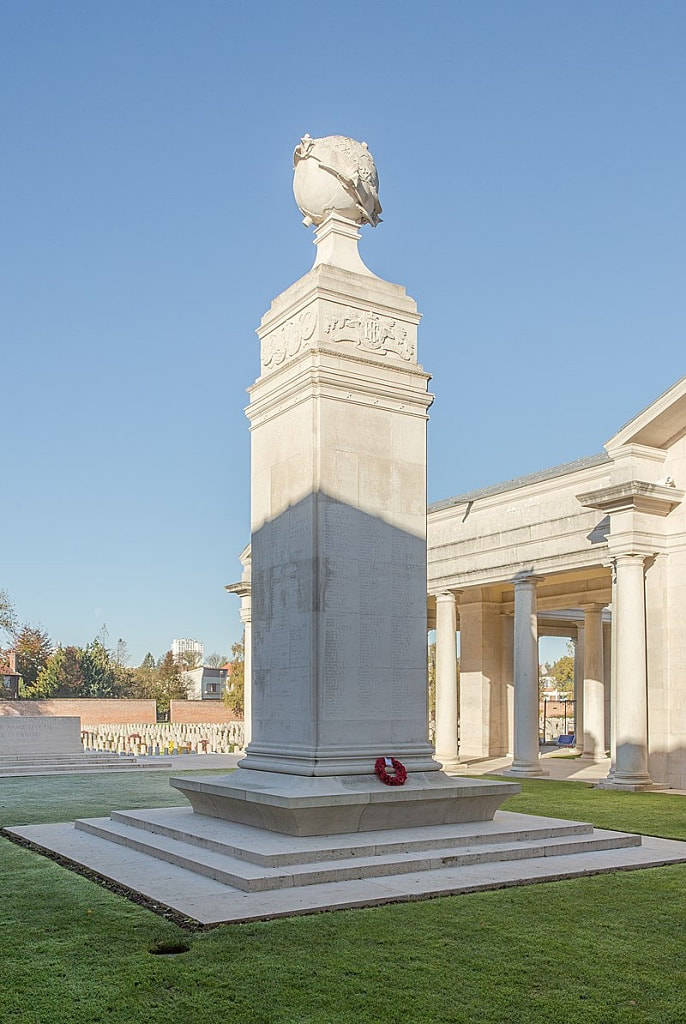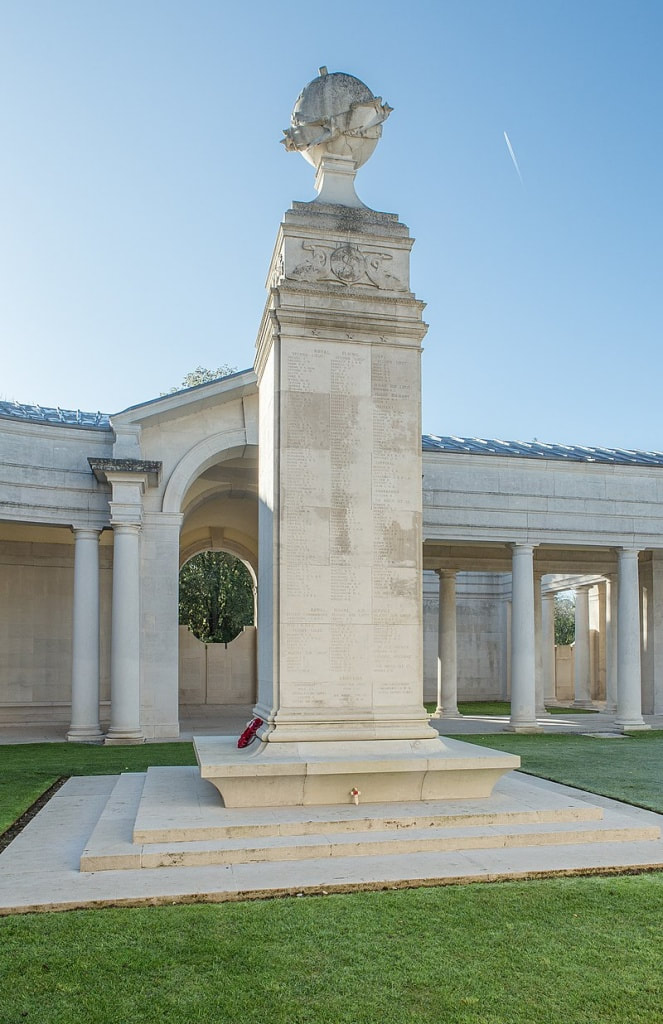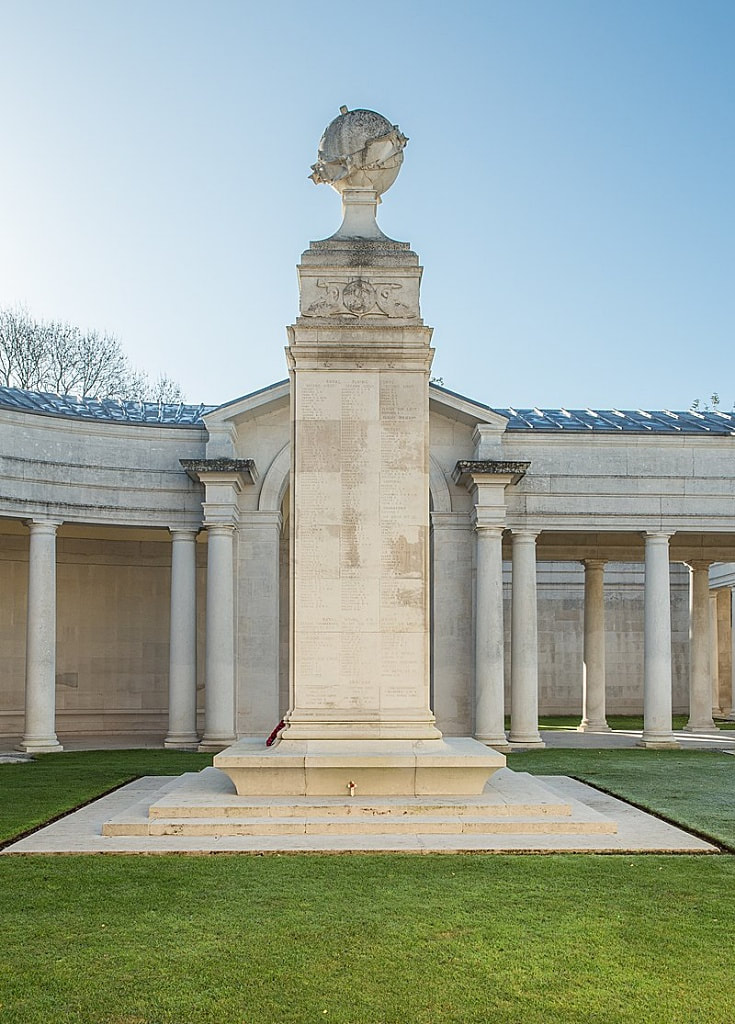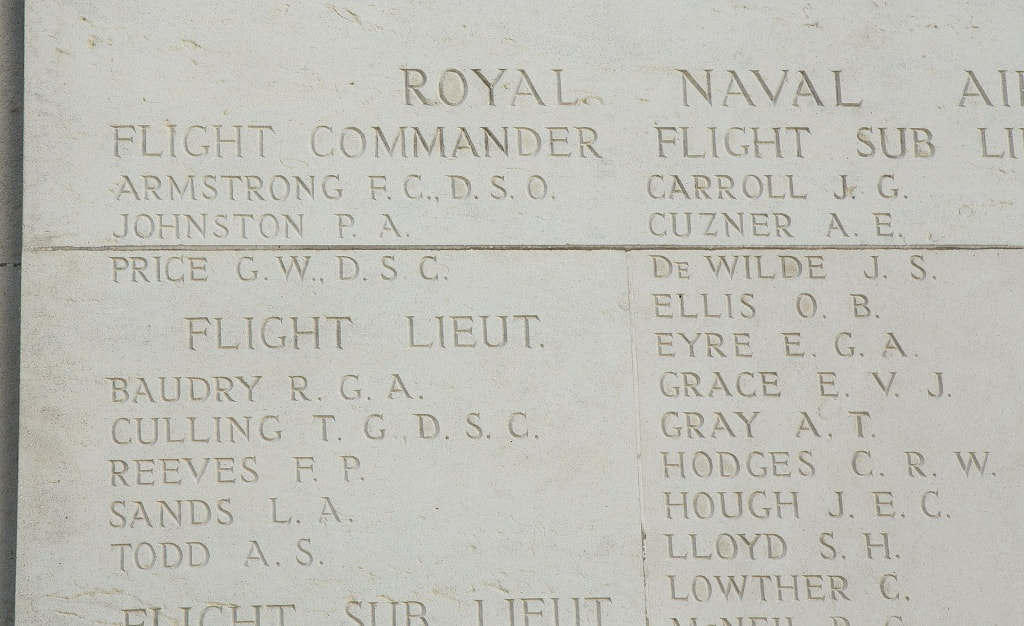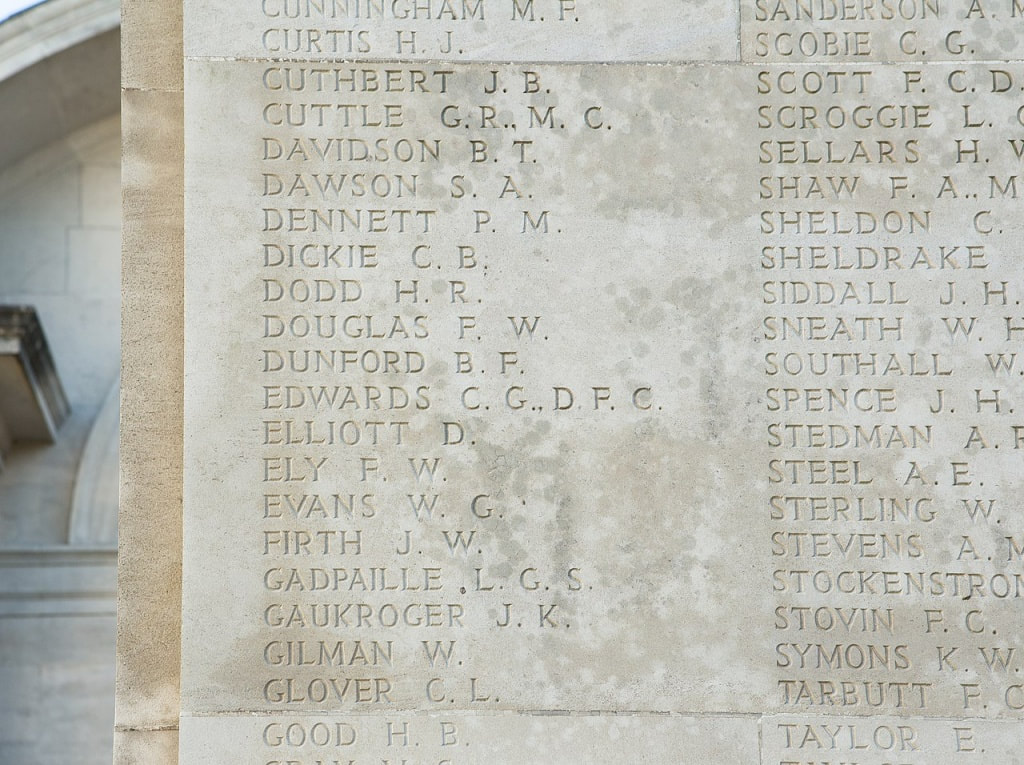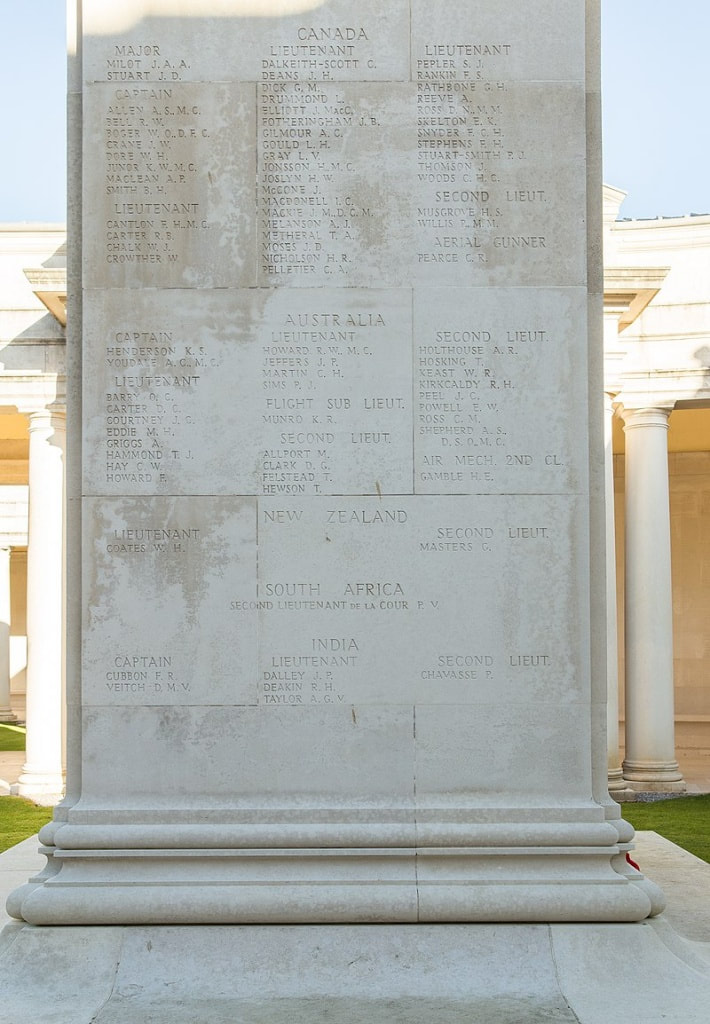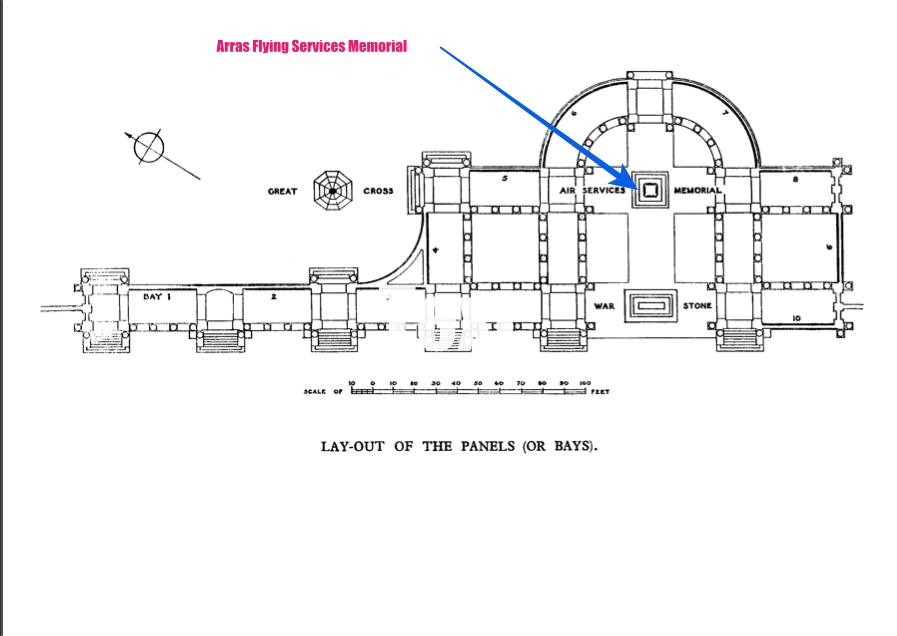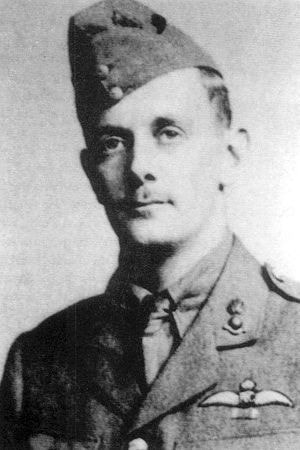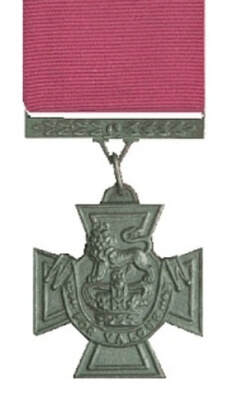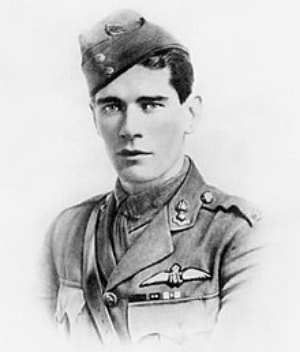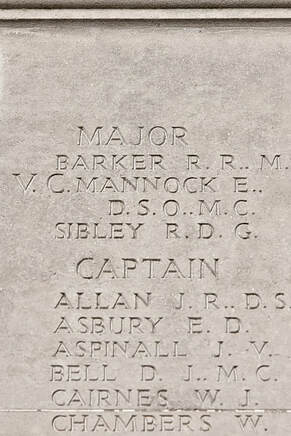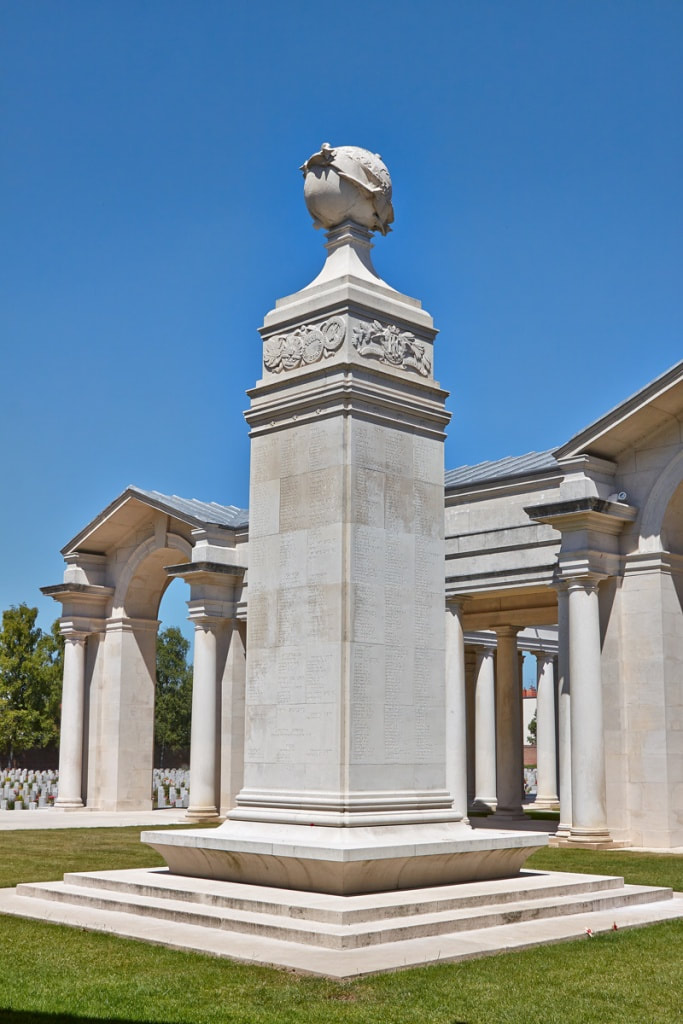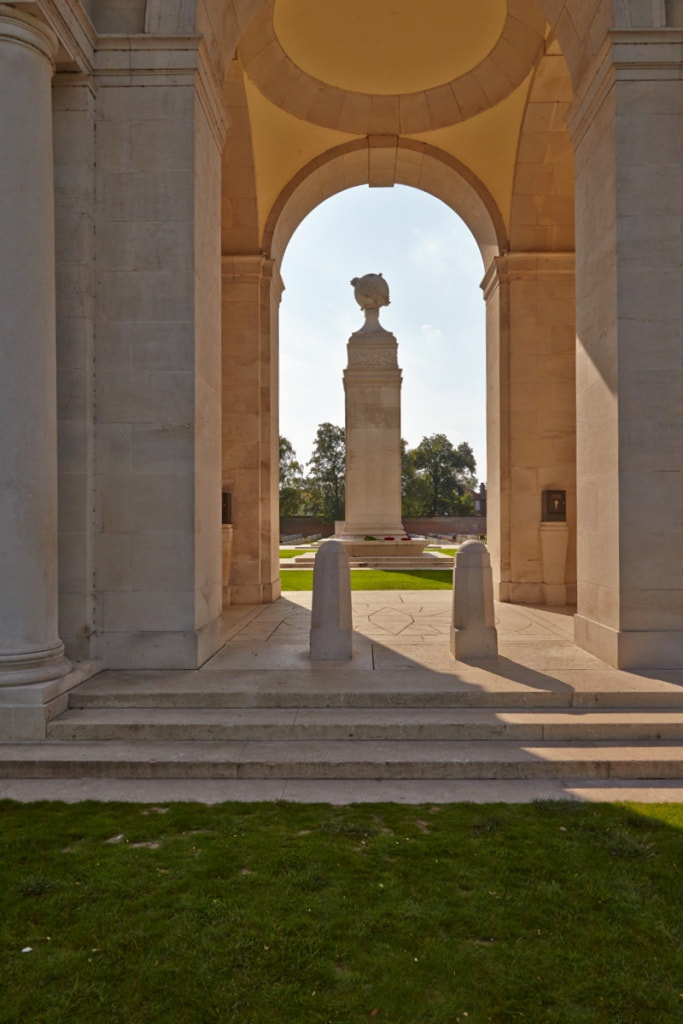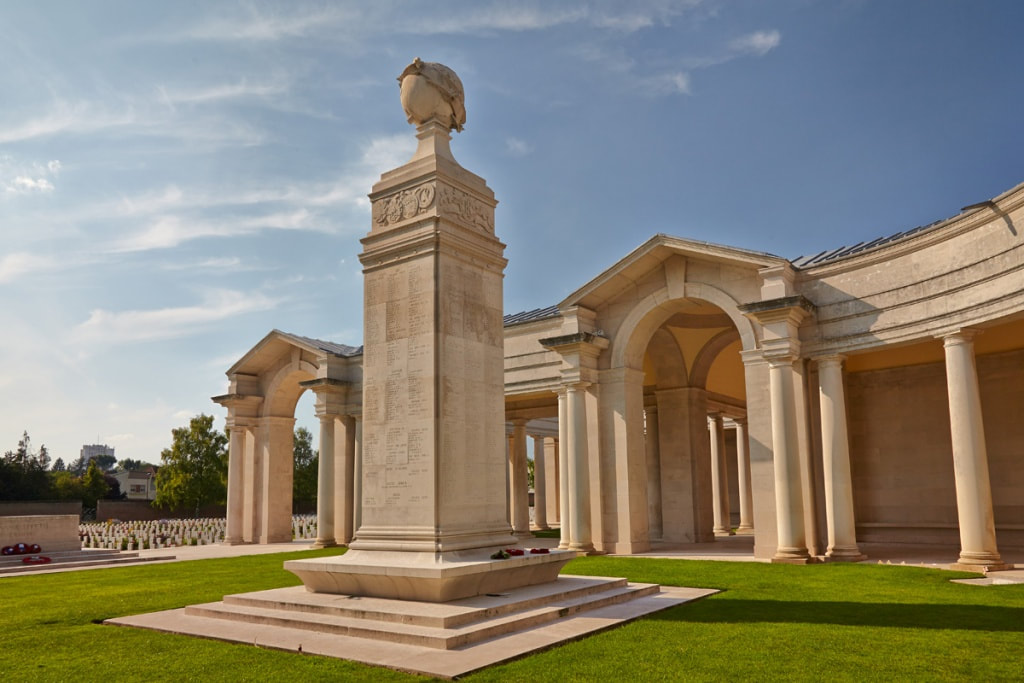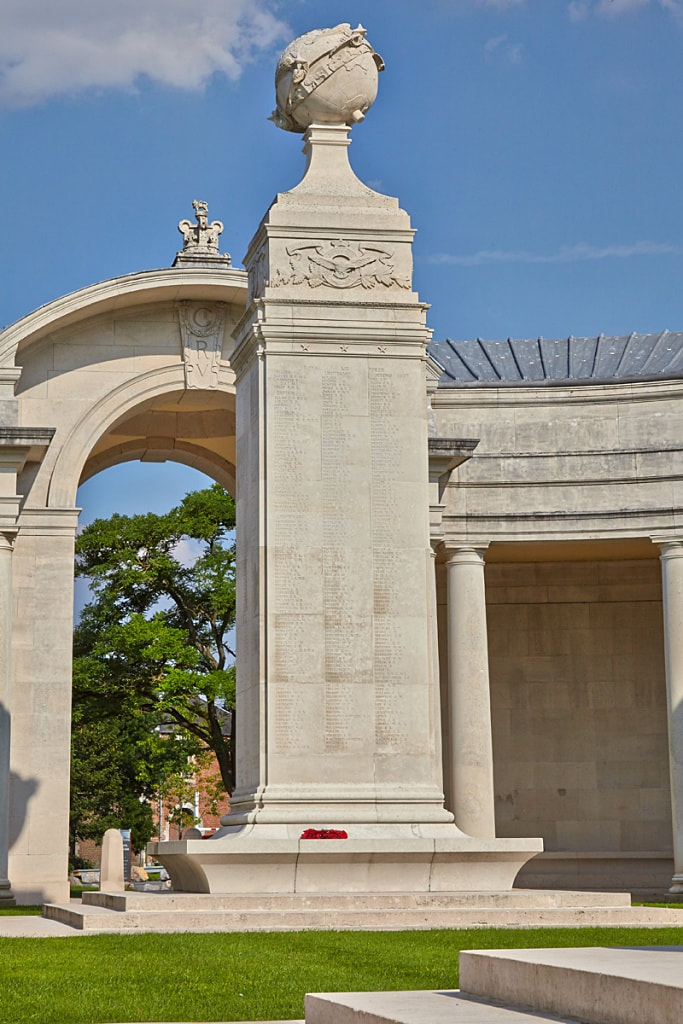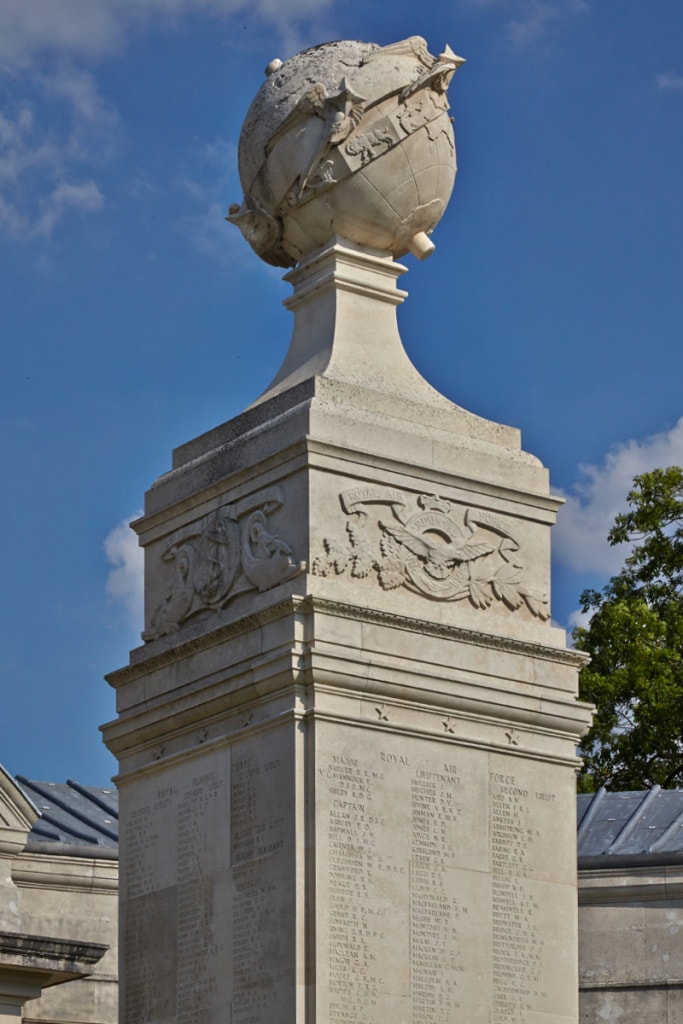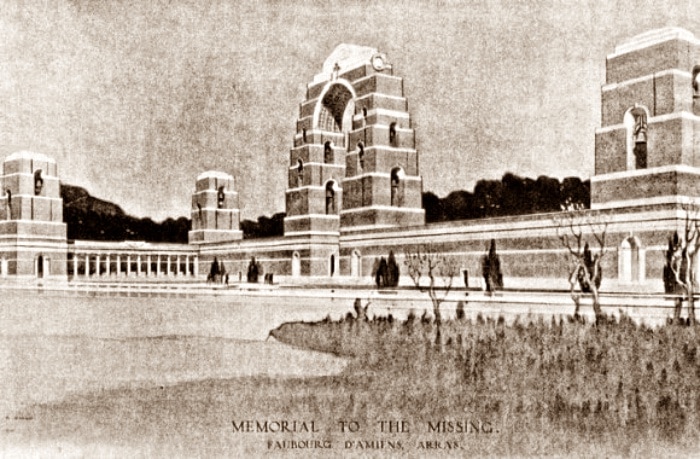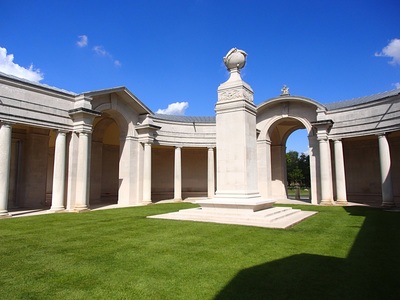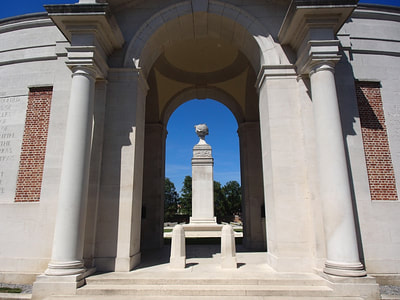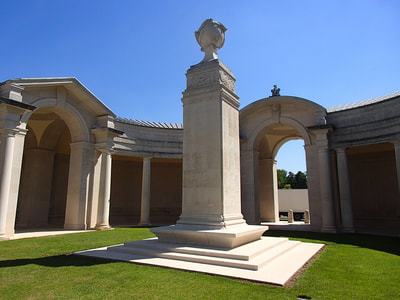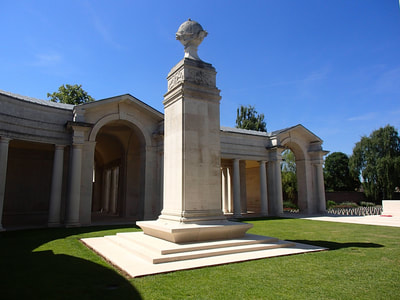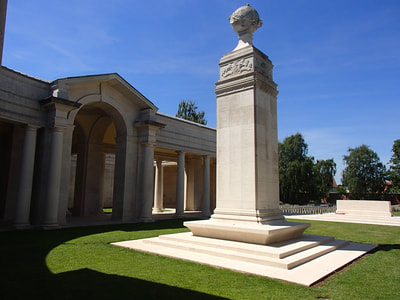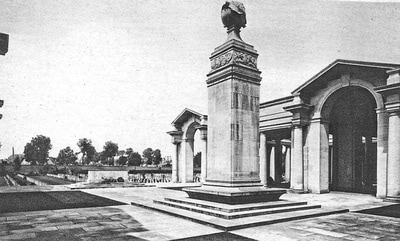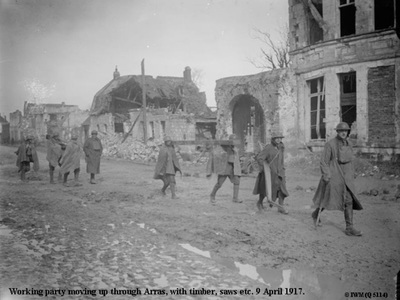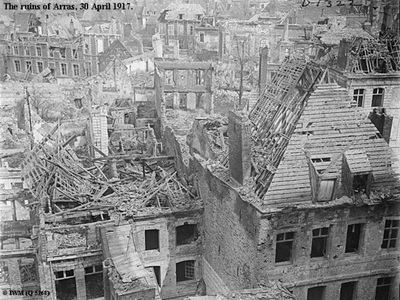ARRAS FLYING SERVICES MEMORIAL
Pas De Calais
France
GPS Coordinates: Latitude: 50.28697, Longitude: 2.76065
Location Information
The Arras Flying Services Memorial will be found in the Faubourg d'Amiens Cemetery, which is in the Boulevard du General de Gaulle in the western part of the town of Arras. The cemetery is near the Citadel, approximately 2 Kms due west of the railway station.
The GPS coordinates for the cemetery are 50.28670, 2.76057
Visiting Information
Wheelchair access to the memorial is possible via an alternative entrance at the rear of Faubourg-d'Amiens Cemetery.
Historical Information
The French handed over Arras to Commonwealth forces in the spring of 1916 and the system of tunnels upon which the town is built were used and developed in preparation for the major offensive planned for April 1917.
The Commonwealth section of the FAUBOURG D'AMIENS CEMETERY was begun in March 1916, behind the French military cemetery established earlier. It continued to be used by field ambulances and fighting units until November 1918. The cemetery was enlarged after the Armistice when graves were brought in from the battlefields and from two smaller cemeteries in the vicinity.
The cemetery contains over 2,650 Commonwealth burials of the First World War, 10 of which are unidentified. The graves in the French military cemetery were removed after the war to other burial grounds and the land they had occupied was used for the construction of the Arras Memorial and Arras Flying Services Memorial.
The adjacent ARRAS MEMORIAL commemorates almost 35,000 servicemen from the United Kingdom, South Africa and New Zealand who died in the Arras sector between the spring of 1916 and 7 August 1918, the eve of the Advance to Victory, and have no known grave. The most conspicuous events of this period were the Arras offensive of April-May 1917, and the German attack in the spring of 1918. Canadian and Australian servicemen killed in these operations are commemorated by memorials at Vimy and Villers-Bretonneux. A separate memorial remembers those killed in the Battle of Cambrai in 1917.
The adjacent ARRAS FLYING SERVICES MEMORIAL commemorates almost 1,000 airmen of the Royal Naval Air Service, the Royal Flying Corps, and the Royal Air Force, either by attachment from other arms of the forces of the Commonwealth or by original enlistment, who were killed on the whole Western Front and who have no known grave.
During the Second World War, Arras was occupied by United Kingdom forces headquarters until the town was evacuated on 23 May 1940. Arras then remained in German hands until retaken by Commonwealth and Free French forces on 1 September 1944. The 1939-1945 War burials number 8 and comprise 3 soldiers and 4 airmen from the United Kingdom and 1 entirely unidentified casualty. Located between the 2 special memorials of the 1914-1918 War is the special memorial commemorating an officer of the United States Army Air Force, who died during the 1939-1945 War. This special memorial, is inscribed with the words "Believed to be buried in this cemetery". In addition, there are 30 war graves of other nationalities, most of them German.
Faubourg d'Amiens Cemetery
Total Burials: 2,688.
World War One Commonwealth Identified Casualties: United Kingdom 2,392, Canada 153, South Africa 60, New Zealand 26, India 9. Total 2,640.
Other Nationalities: 29.
World War One Commonwealth Unidentified Casualties: 10.
World War Two Commonwealth Identified Casualties: United Kingdom 7.
World War Two American Casualty: 1.
World War Two Unidentified Casualty: 1.
Arras Memorial
Commemorated on Memorial: United Kingdom 34,672, South Africa 76, New Zealand 1. Total 34,749.
Arras Flying Services Memorial
Commemorated on Memorial: United Kingdom 911, Canada 46, Australia 17, India 6, New Zealand 2, South Africa 1. Total 983.
Both cemetery and memorials were designed by Sir Edwin Lutyens, with sculpture by Sir William Reid Dick. The memorial was unveiled by Lord Trenchard, Marshal of the Royal Air Force on 31 July 1932 (originally it had been scheduled for 15 May, but due to the sudden death of French President Doumer, as a mark of respect, the ceremony was postponed until July).
Memorial images in gallery below © Werner Van Caneghem
Major Lanoe George Hawker, V. C. & D. S. O. Mentioned in Despatches
24th Squadron, Royal Flying Corps and Royal Engineers
23rd November 1916, aged 25.
Son of Mrs Julia Hawker, of 5, Victoria Terrace, Eastbourne and the late Lieut. Henry Colley Hawker, R.N.
Citation
An extract from The London Gazette, dated 24th Aug., 1915, records the following:-"For most conspicuous bravery and very great ability on 25th July, 1915. When flying alone he attacked three German aeroplanes in succession. The first managed eventually to escape, the second was driven to ground damaged, and the third, which he attacked at a height of about 10,000 feet, was driven to earth in our lines, the pilot and observer being killed. The personal bravery shown by this Officer was of the very highest order, as the enemy's aircraft were armed with machine guns, and all carried a passenger as well as the pilot."
Major Edward Mannock, V. C. & D. S. O. and two bars, M. C. and bar
85th Squadron, Royal Air Force and Royal Engineers
26th July 1918, aged 31.
Son of Mrs. J. Mannock, of 24, Lozells Rd., Six Ways, Birmingham.
In addition to his Citation, the following information should also be noted:
Major Mannock was involved in the downing of at least 23 further aircraft, but because others might well have assisted in their destruction these were not added to the total in his VC Citation.
Citation
An extract from the "London Gazette", dated 18th July, 1919, records the following:-"On the 17th June, 1918, he attacked a Halberstadt machine near Armentieres and destroyed it from a height of 8,000 feet. On the 7th July, 1918, near Doulieu, he attacked and destroyed one Fokker (red-bodied) machine, which went vertically into the ground from a height of 1,500 feet. Shortly afterwards he ascended 1,000 feet and attacked another Fokker biplane, firing 60 rounds into it, which produced an immediate spin, resulting, it is believed, in a crash. On the 14th July, 1918, near Merville, he attacked and crashed a Fokker from 7,000 feet, and brought a two-seater down damaged. On the 19th July, 1918, near Merville, he fired 80 rounds into an Albatross two-seater, which went to the ground in flames. On the 20th July, 1918, East of La Bassee, he attacked and crashed an enemy two-seater from a height of 10,000 feet. About an hour afterwards he attacked at 8,000 feet a Fokker biplane near Steenwercke and drove it down out of control, emitting smoke. On the 22nd July, 1918, near Armentieres, he destroyed an enemy triplane from a height of 10,000 feet. Major Mannock was awarded the under mentioned distinctions for his previous combats in the air in France and Flanders:-Military Cross, gazetted 17th Sept., 1917; Bar to Military Cross, gazetted 18th Oct., 1917; Distinguished Service Order, gazetted 16th Sept., 1918; Bar to Distinguished Service Order (1st), gazetted 16th Sept., 1918; Bar to Distinguished Service Order (2nd), gazetted 3rd Aug., 1918. This highly distinguished officer during the whole of his career in the Royal Air Force, was an outstanding example of fearless courage, remarkable skill, devotion to duty and self-sacrifice, which has never been surpassed. The total number of machines definitely accounted for by Major Mannock up to the date of his death in France (26th July, 1918) is 50 - the total specified in the " Gazette " of 3rd Aug., 1918, was incorrectly given as 48 instead of 41."
Pictures in gallery below Geerhard Joos
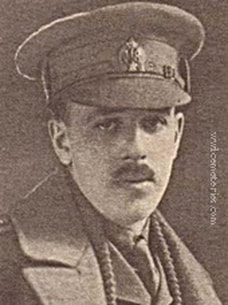
Lieutenant
John Beveridge Fotheringham
Canadian Infantry Regimental Depot, (Quebec). and 45th Sqdn Royal Flying Corps
7th July 1917, aged 25.
Son of George B. and Elizabeth Fotheringham, of 15, Buena Vista Rd., Rockliffe Park, Ottawa, Canada.
Shot down and killed south of Ypres, Belgium, along with his pilot, British 2nd Lieutenant John Victor Ariel Gleed, Lt. Gleed is buried at Wytschaete Military Cemetery.
Picture courtesy of John Fotheringham, Lt. Fotheringham was his grandfather's cousin.
John Beveridge Fotheringham
Canadian Infantry Regimental Depot, (Quebec). and 45th Sqdn Royal Flying Corps
7th July 1917, aged 25.
Son of George B. and Elizabeth Fotheringham, of 15, Buena Vista Rd., Rockliffe Park, Ottawa, Canada.
Shot down and killed south of Ypres, Belgium, along with his pilot, British 2nd Lieutenant John Victor Ariel Gleed, Lt. Gleed is buried at Wytschaete Military Cemetery.
Picture courtesy of John Fotheringham, Lt. Fotheringham was his grandfather's cousin.
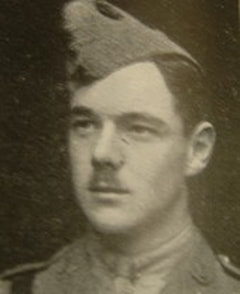
Lieutenant
Edmund Llewellyn Lewis
24th Squadron, Royal Flying Corps and 1st/7th Bn. Essex Regiment.
26th December 1916, aged 21.
Son of Mr. and Mrs. Hugh Lewis, of St. David's, Noctorum, Birkenhead.
Edmund Llewellyn Lewis
24th Squadron, Royal Flying Corps and 1st/7th Bn. Essex Regiment.
26th December 1916, aged 21.
Son of Mr. and Mrs. Hugh Lewis, of St. David's, Noctorum, Birkenhead.
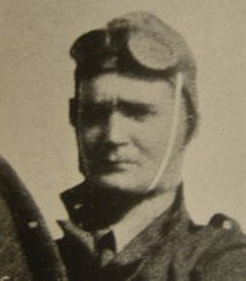
Lieutenant
Frank Arthur Matthews
9th Squadron, Royal Flying Corps and The Royal Sussex Regiment.
24th April 1917.
Frank Arthur Matthews
9th Squadron, Royal Flying Corps and The Royal Sussex Regiment.
24th April 1917.
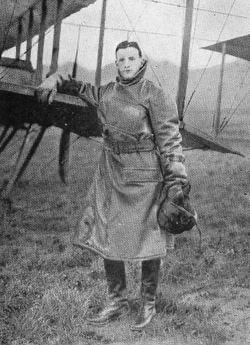
Second Lieutenant
Robert Leonard Grahame Skinner
46th Squadron, Royal Air Force, attached to 1st/2nd Bn. Black Watch (Royal Highlanders)
3rd May 1918, aged 20.
Son of the Rev. Henry Leonard Skinner and Susanna Maria Skinner, of The Rectory, Callander. Perthshire.
The information below supplied by 'The Ellesmerian Club', the alumni organisation for Ellesmere College where Robert was a pupil.
Robert Leonard Grahame Skinner came to Ellesmere College from the McLaren High School, Callander in Perthshire, Scotland. He arrived in May 1911 and stayed until July 1914. His father, the Reverend Henry L. Skinner, lived at the St. Andrews Rectory, Callander with his mother Susannah. From the Scottish Census of 1901 it seems that Robert had a twin, Helen.
He was allocated a bed in the ‘Arthur’ dormitory and placed in Form Upper II under the instruction of Mr. J. G. Sinclair. There were 158 on the nominal roll. During his time at Ellesmere, Robert represented his dormitory in all the major sports, cricket, rugby, football and hockey. In his senior years, he was a frequent speaker from the floor in the Debating Society and took the part of ‘the widow’ in the Shakespearian Society production of “The Taming of the Shrew” (1913), the last such play before the outbreak of war.
He passed Arithmetic, Divinity, History, English, Geography, Drawing and Chemistry in the Oxford Local Examinations of 1913, the same year that he was confirmed. He was awarded the Vth Form Science prize in his final term.
As soon as he was able, he enlisted in the 8th Battalion, the Cameron Highlanders, serving with them in the trenches for five months. Afterwards he received a commission in the 1/2nd Battalion, the Black Watch. He was then commissioned to the Royal Air Force and soon obtained his Royal Aero Aviators Certificate # 5374 (his “wings”) on 27th October 1917 at the Graham-White Flying School, Hendon
Second Lieutenant Robert Skinner returned to France at Easter time 1918, as a pilot with No. 46 Squadron which was part of the 22nd (Army) Wing, the 5th Brigade, based at Busigny. Within five weeks, on 3rd May, he was reported missing over German lines when flying with five others. He was last seen entering a cloud in his Camel, a single seater fighter bi-plane B7357.
When his British War Medal was put up for auction in 2012 the documentation accompanying it stated that he was shot down by Lt. P. Billick, the highest ‘scoring’ German ace not to be awarded the “pour le Merite” (known as the Blue Max during the war). Robert was the 14th of his 31 ‘victories’.
News came through on 31st May that he was a prisoner of war. His wounds and injuries, however, were too great and he died very soon after. The date of his death is usually given as the 3rd May, a day when twenty other pilots were killed.
He has no known grave but is remembered on the Arras Flying Services Memorial and on the War Memorials at Ellesmere College and at Callander. His sacrifice is also commemorated on a cairn on Dounmhor, erected by Callander Scouts in 1921 to commemorate the sacrifice made by past members of their local group.
The Flight-Commander of No. 46 Squadron wrote of him: Although he had been with us such a short time, he had endeared himself to us all and proved a very brave boy, who was always there when he was wanted.
Robert Leonard Grahame Skinner
46th Squadron, Royal Air Force, attached to 1st/2nd Bn. Black Watch (Royal Highlanders)
3rd May 1918, aged 20.
Son of the Rev. Henry Leonard Skinner and Susanna Maria Skinner, of The Rectory, Callander. Perthshire.
The information below supplied by 'The Ellesmerian Club', the alumni organisation for Ellesmere College where Robert was a pupil.
Robert Leonard Grahame Skinner came to Ellesmere College from the McLaren High School, Callander in Perthshire, Scotland. He arrived in May 1911 and stayed until July 1914. His father, the Reverend Henry L. Skinner, lived at the St. Andrews Rectory, Callander with his mother Susannah. From the Scottish Census of 1901 it seems that Robert had a twin, Helen.
He was allocated a bed in the ‘Arthur’ dormitory and placed in Form Upper II under the instruction of Mr. J. G. Sinclair. There were 158 on the nominal roll. During his time at Ellesmere, Robert represented his dormitory in all the major sports, cricket, rugby, football and hockey. In his senior years, he was a frequent speaker from the floor in the Debating Society and took the part of ‘the widow’ in the Shakespearian Society production of “The Taming of the Shrew” (1913), the last such play before the outbreak of war.
He passed Arithmetic, Divinity, History, English, Geography, Drawing and Chemistry in the Oxford Local Examinations of 1913, the same year that he was confirmed. He was awarded the Vth Form Science prize in his final term.
As soon as he was able, he enlisted in the 8th Battalion, the Cameron Highlanders, serving with them in the trenches for five months. Afterwards he received a commission in the 1/2nd Battalion, the Black Watch. He was then commissioned to the Royal Air Force and soon obtained his Royal Aero Aviators Certificate # 5374 (his “wings”) on 27th October 1917 at the Graham-White Flying School, Hendon
Second Lieutenant Robert Skinner returned to France at Easter time 1918, as a pilot with No. 46 Squadron which was part of the 22nd (Army) Wing, the 5th Brigade, based at Busigny. Within five weeks, on 3rd May, he was reported missing over German lines when flying with five others. He was last seen entering a cloud in his Camel, a single seater fighter bi-plane B7357.
When his British War Medal was put up for auction in 2012 the documentation accompanying it stated that he was shot down by Lt. P. Billick, the highest ‘scoring’ German ace not to be awarded the “pour le Merite” (known as the Blue Max during the war). Robert was the 14th of his 31 ‘victories’.
News came through on 31st May that he was a prisoner of war. His wounds and injuries, however, were too great and he died very soon after. The date of his death is usually given as the 3rd May, a day when twenty other pilots were killed.
He has no known grave but is remembered on the Arras Flying Services Memorial and on the War Memorials at Ellesmere College and at Callander. His sacrifice is also commemorated on a cairn on Dounmhor, erected by Callander Scouts in 1921 to commemorate the sacrifice made by past members of their local group.
The Flight-Commander of No. 46 Squadron wrote of him: Although he had been with us such a short time, he had endeared himself to us all and proved a very brave boy, who was always there when he was wanted.

